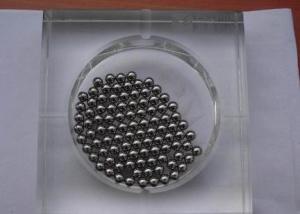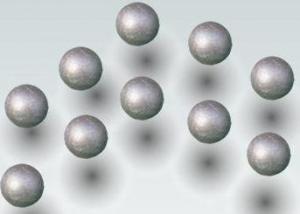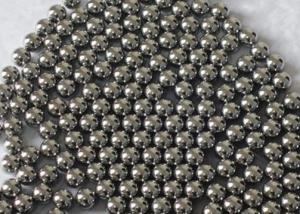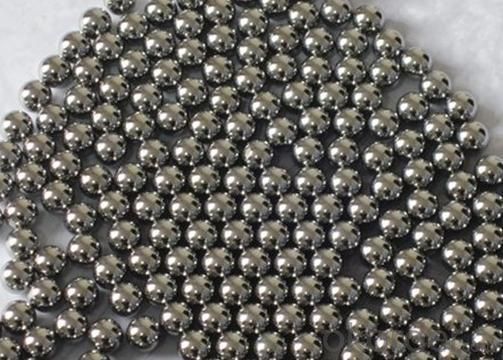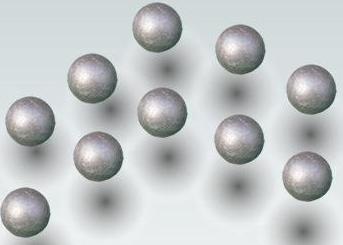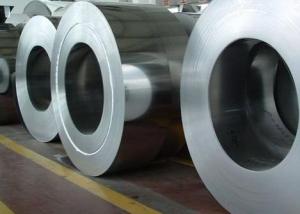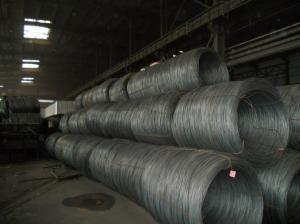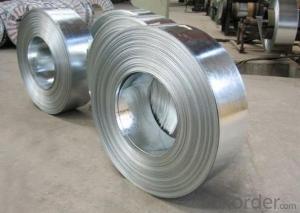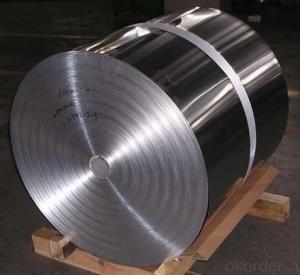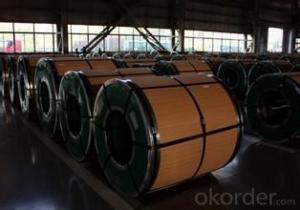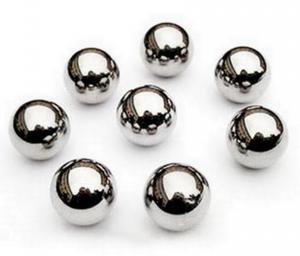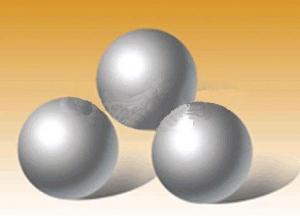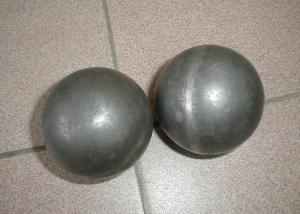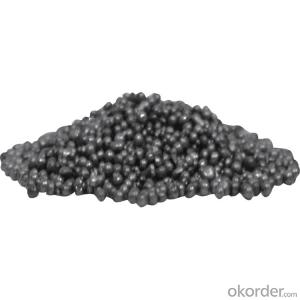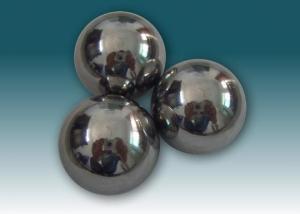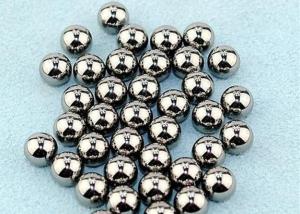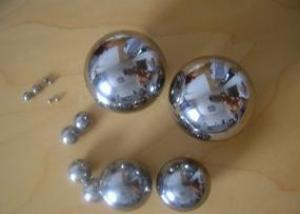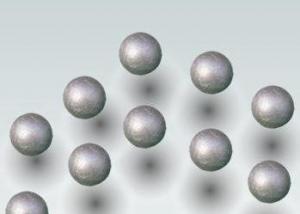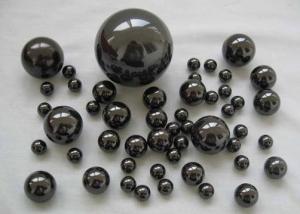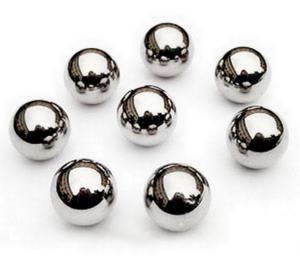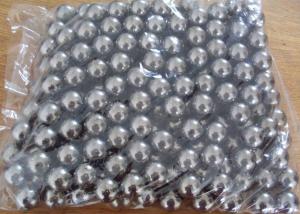304 Steel Ball
- Loading Port:
- China Main Port
- Payment Terms:
- TT or LC
- Min Order Qty:
- 5 Tons m.t.
- Supply Capability:
- -
OKorder Service Pledge
OKorder Financial Service
You Might Also Like
Stainless Steel Ball
MAIN PRODUCTS:
1. Material: AISI304, 316L, 420C, 430, 440C
2. Steel ball, with material AISI 1008-1086.
3. Chrome steel ball,with material: AISI52100
4. Flying saucer steel ball
5. Precision casting, including auto parts, machine parts, hardware handles, etc.
CHARACTER OF PRODUCTS:
1.The Grade of our products is from G10 to G1000
2.The dimension is from 0.5 mm to 25.4 mm.
3.The products from us are widely used in several industries, such as hardware, sliders, ball bearing lead screw, wheels, toys, bicycles, bearings, trust bearings pulleys, chemical industries, etc.
DETAIL SPECIFICATION:
|
Item |
SS304,316L,420C,440C Stainless steel ball |
|
Category |
Stainless Steel Ball |
|
Material |
AISI 420 430 440 SS304 316L |
|
Size |
0.5mm--25.4mm, 1/4",3/16",5/32",1/8",7/32",5/16",7/8",1" |
|
Grade |
G100-G3000 |
|
Hardness ( HRC) |
HRC58-65 |
|
Application |
Bicycle, bearing, pulley, slide, handcraft, shelf, luggage, hardware, grinding media |
|
Standard |
GB/T-308-2002, GB/T1148-93 |
|
Matched Standard |
DIN, JIS, ASME |
|
Certification |
ISO |
|
Packing |
Oily packing in pouch packing,plastic/tin box packing 1, 25kg/carton with steel pallet packing 2,25kg/carton without steel pallet packing 3,10kg/box then in wooden case packing 4,250kg/ steel drum packing or according to customers' requirement |
|
Place of original |
Shandong province, China |
|
Delivery |
Within 30 days or confirmed while placing order |
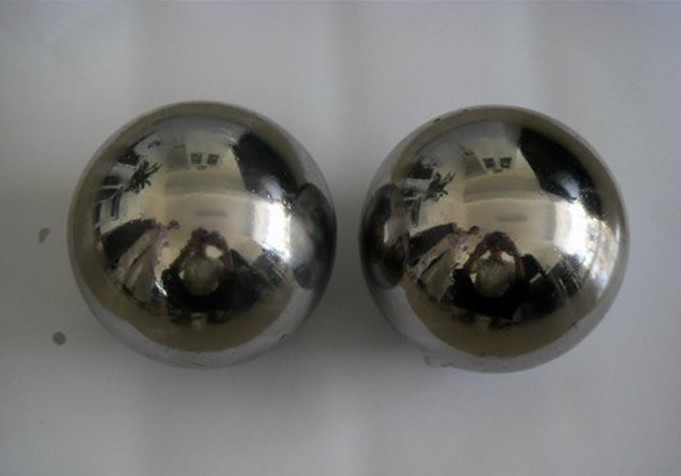
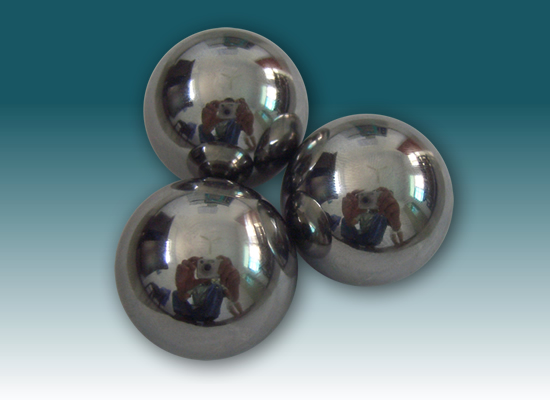
- Q: Do stainless steel balls come in different sizes?
- Yes, stainless steel balls do come in different sizes. Stainless steel balls are available in a wide range of sizes to suit various applications and requirements. They can be found in sizes as small as a fraction of an inch to several inches in diameter. The size of stainless steel balls is determined by their diameter, and different applications may require different sizes of balls. These balls are commonly used in industries such as aerospace, automotive, medical, and precision machinery, where their size can play a crucial role in achieving the desired performance and functionality.
- Q: How do stainless steel balls compare to glass balls?
- Different applications require distinct characteristics from stainless steel balls and glass balls. In terms of strength and durability, stainless steel balls outperform glass balls. They have exceptional resistance to corrosion, rust, and wear, making them ideal for heavy-duty and high-pressure environments. Moreover, stainless steel balls can withstand extreme temperatures and are less prone to breaking or shattering under stress. These qualities make them highly sought after in industries such as automotive, aerospace, and manufacturing. On the other hand, glass balls are renowned for their optical properties and aesthetic allure. They possess transparency, smoothness, and a high refractive index, which renders them valuable in optical instruments, scientific research, and decorative applications. Additionally, glass balls are chemically inert, making them suitable for utilization in laboratories and medical devices. The cost is another factor to consider. Stainless steel balls are generally pricier than glass balls due to the additional manufacturing processes involved in their production. However, the extended lifespan and durability of stainless steel balls often justify the higher initial investment. Ultimately, the choice between stainless steel balls and glass balls hinges on the specific requirements of the application. If paramount considerations include strength, durability, and resistance to corrosion, stainless steel balls are the superior option. Conversely, if the main concerns revolve around optical properties, transparency, and aesthetic appeal, glass balls would be the more fitting choice.
- Q: How do stainless steel balls handle rolling resistance?
- The exceptional rolling resistance properties of stainless steel balls are well-known. When these balls are used in rolling applications, they demonstrate minimal resistance to rolling motion, resulting in smooth and efficient movement. This can be attributed to several factors. First and foremost, stainless steel is a hard and durable material, giving the balls a low coefficient of friction when they come into contact with other surfaces. As a result, less energy is required to overcome any resistance, allowing for smooth rolling motion. Secondly, stainless steel balls are typically manufactured with a high surface finish and precise engineering, ensuring that they possess an almost perfect spherical shape. This uniform shape minimizes any irregularities or imperfections that could cause friction or resistance during rolling. Furthermore, stainless steel balls exhibit low levels of deformation or wear, even under heavy loads or repeated rolling cycles. This means that the rolling resistance remains consistently low over time, promoting long-term efficiency and longevity. Additionally, stainless steel balls are resistant to corrosion. This is particularly advantageous in applications where the balls are exposed to moisture, chemicals, or other corrosive substances. Corrosion can lead to surface roughness and increased rolling resistance, but stainless steel's corrosion resistance helps to maintain a smooth ball surface and reduce resistance. Overall, stainless steel balls are highly effective in handling rolling resistance due to their low coefficient of friction, high surface finish, resistance to deformation and corrosion, and exceptional durability. These characteristics make them the preferred choice in various industries, including automotive, aerospace, and precision machinery, where smooth and efficient rolling motion is essential.
- Q: Are stainless steel balls suitable for automotive applications?
- Stainless steel balls are indeed suitable for automotive applications. They possess outstanding corrosion resistance, high temperature resistance, and durability. These characteristics make stainless steel balls perfect for a range of automotive uses, including bearings, valves, pumps, and fuel injectors, among others. Their design is specifically tailored to endure harsh conditions, such as high speeds, vibrations, and extreme temperatures. Moreover, stainless steel balls provide excellent dimensional stability, which is crucial for maintaining precision and performance in automotive components. In summary, stainless steel balls are a dependable choice for automotive applications due to their strength, resistance to wear and tear, and ability to withstand demanding operating conditions.
- Q: Are stainless steel balls used in any medical implants or devices?
- Yes, stainless steel balls are widely used in various medical implants and devices. Due to their excellent corrosion resistance and high strength, stainless steel balls are commonly utilized in applications such as joint replacements, orthopedic implants, and surgical instruments.
- Q: Can stainless steel balls be used in material handling equipment?
- Yes, stainless steel balls can be used in material handling equipment. Stainless steel is highly durable, corrosion-resistant, and has a high load-bearing capacity, making it suitable for various applications in material handling equipment such as conveyor systems, ball transfer units, and bearings.
- Q: Can stainless steel balls be used in flow control applications?
- Flow control applications can make use of stainless steel balls. This material is known for its durability and resistance to corrosion, making it appropriate for various industries including oil and gas, chemical, and food processing. Valves, pumps, and other flow control devices often employ stainless steel due to its ability to precisely regulate fluid flow. The strength, hardness, and wear resistance of stainless steel balls allow them to endure high-pressure and high-temperature conditions. As a result, they deliver dependable and enduring performance, which is why they are highly favored in flow control applications.
- Q: Good stainless steel ball valve and copper ball valve which is good?
- If the medium temperature is too high. Copper ball valve must be used! If the medium temperature is not more than 80 degrees. With stainless steel ball valve on it.
- Q: Are stainless steel balls resistant to sea water?
- Yes, stainless steel balls are resistant to sea water. Stainless steel is a corrosion-resistant material that contains chromium, which forms a protective layer on the surface of the steel, preventing it from reacting with the sea water. This makes stainless steel balls highly resistant to rust and corrosion when exposed to the saltwater environment. Therefore, they are commonly used in marine applications such as boat fittings, valves, and underwater equipment.
- Q: Are stainless steel balls used in chemical processing equipment?
- Stainless steel balls find frequent application in chemical processing equipment. Their excellent corrosion resistance and high strength make stainless steel a preferred material in this industry. These balls serve various purposes, including mixing, grinding, and milling processes. They exhibit remarkable endurance against harsh chemicals and high temperatures, thus rendering them suitable for chemical reactors, pumps, valves, and other equipment. Moreover, stainless steel balls can be easily cleaned and maintained, guaranteeing the purity and integrity of the chemicals undergoing processing.
1. Manufacturer Overview
| Location | Zhejiang,China |
| Year Established | 2000 |
| Annual Output Value | Above US$8.3 Million |
| Main Markets | Europe, America |
| Company Certifications | ISO9001:2000 |
2. Manufacturer Certificates
| a) Certification Name | |
| Range | |
| Reference | |
| Validity Period |
3. Manufacturer Capability
| a) Trade Capacity | |
| Nearest Port | Shanghai |
| Export Percentage | 30% |
| No.of Employees in Trade Department | 30 People |
| Language Spoken: | English;Chinese |
| b) Factory Information | |
| Factory Size: | Above 80,000 square meters |
| No. of Production Lines | Above 7 |
| Contract Manufacturing | OEM Service Offered;Design Service Offered |
| Product Price Range | Average |
Send your message to us
304 Steel Ball
- Loading Port:
- China Main Port
- Payment Terms:
- TT or LC
- Min Order Qty:
- 5 Tons m.t.
- Supply Capability:
- -
OKorder Service Pledge
OKorder Financial Service
Similar products
Hot products
Hot Searches
Related keywords
